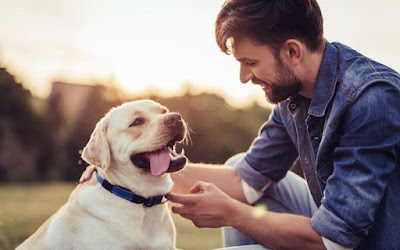Expert Dog Training Tips: Mastering Commands and Positive Reinforcement
When it comes to dog training, mastering essential commands and using positive reinforcement are key to fostering a strong bond with your furry friend. Whether you're starting with a playful puppy or an older dog, these expert tips will make the training process effective and enjoyable.
1. Mastering Essential Commands
Mastering basic commands like "sit," "stay," "come," and "leave it" forms the foundation of good behavior and ensures your dog's safety.
- Sit Command: Hold a treat near your dog's nose, then move your hand upwards, causing their head to follow the treat and their bottom to lower. Once seated, say "sit," reward them with the treat, and offer praise.
- Stay Command: Begin with the dog in a sitting position. Raise your hand in front of you and say "stay." Take a few steps back. Reward them with a treat and praise if they remain in place. Gradually increase the distance before giving the reward.
2. Utilizing Positive Reinforcement
Positive reinforcement is the most effective training method. Reward your dog with treats, praise, or playtime whenever they follow a command or exhibit good behavior. This encourages them to repeat the behavior.
3. Maintaining Consistency
Consistency is crucial for training success. Use the same commands and reward system each time. Ensure everyone in your household follows the same training rules to avoid confusing your dog.
4. Short and Fun Training Sessions
Dogs have short attention spans, so keep training sessions brief, around 10-15 minutes. Make sessions enjoyable by integrating play and rewards, ensuring your dog looks forward to training time.
5. Exercising Patience
Training takes time, and every dog learns at their own pace. Be patient and avoid punishing your dog for mistakes. Instead, calmly correct the behavior and try again.
6. Prioritizing Socialization
Expose your dog to different environments, people, and animals. Socialization helps prevent fear and aggression, teaching your dog to behave well in various situations.
7. Implementing Crate Training
Crate training can be beneficial for potty training and providing a safe space for your dog. Make the crate a positive place with a comfortable bed and treats, avoiding its use as a punishment.
8. Regular Obedience Training
Regular obedience training reinforces good behavior and keeps your dog's skills sharp. Practice commands daily and gradually introduce new ones to challenge your dog.
9. Seeking Professional Help
If you encounter persistent behavioral issues, don't hesitate to seek assistance from a professional dog trainer. They can provide personalized guidance and techniques to address specific problems.
10. Staying Positive and Enjoying the Journey
Training your dog should be an enjoyable experience for both of you. Celebrate progress, no matter how small, and maintain a positive attitude. Your enthusiasm and encouragement will elicit better responses from your dog.
Conclusion
Training your dog is a continuous commitment that requires dedication, patience, and consistency. By following these professional tips and creating a positive learning environment, you'll build a strong, trusting relationship with your dog, ensuring they grow into a well-behaved and happy companion. Happy training!

